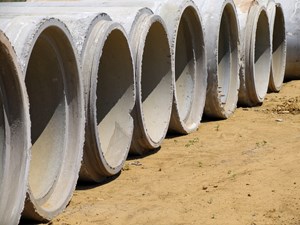Project to Pipe River Water Across North Dakota Breaks Ground
(AP) — With North Dakota in the midst of a prolonged dry spell not seen in years, officials are promoting a decades-long idea of piping Missouri River water across the state to central and eastern North Dakota to combat future drought conditions there, especially in Fargo.
A groundbreaking is planned Aug. 3 near Carrington to mark the start of pipeline construction for the Red River Valley Water Supply Project, a more than $1 billion project that still faces huge funding and legal hurdles before even a drop of water from the river can be tapped for emergencies during an extended drought.
The event, expected to be attended by Lt. Gov. Brent Sanford, Fargo Mayor Tim Mahoney, Republican Senate Majority Leader Rich Wardner and others, is purely ceremonial, said Duane DeKrey, a former lawmaker who now is the general manager for the Garrison Diversion Conservancy District, which is heading the project.
The ceremony comes as the state is facing drought conditions not seen since the early 2000s.
The idea for the drought-mitigation project first surfaced in about 1986, inspired by a devastating drought in the 1930s that caused “zero flow” to the Red River at Fargo for five months, DeKrey said.
Fargo relies primarily on the Red River for its water supply. During the drought years of the ’30s, the river almost dried up. Similar conditions today would cause extreme water supply shortages and billions of dollars in economic damage to the region, DeKrey said.
The project would draw water from the Missouri River south of Washburn, where it would be sent 167 miles (269 kilometers) through a 72-inch (1.8-meter) diameter buried steel pipe, at a rate of more than 74,000 gallons (280,120 liters) a minute. It would empty near Cooperstown into the Sheyenne River, and ultimately spill into the north-flowing Red River, said Kimberly Cook, a spokeswoman for the project.
The price of the project is currently pegged at $1.22 billion, DeKrey said.
The North Dakota Legislature this year appropriated $50 million toward the project and $30 million two years ago. The money has allowed some work to be done at the intake structure near Washburn, the discharge structure near Cooperstown, and a little more than a mile of pipeline placement south of Carrington, DeKrey said.
Still, the money appropriated by the Legislature is barely keeping pace with the $20 million to $30 million of additional costs annually due to inflation, DeKrey said.
Backers are buoyed by a landmark $680 million infrastructure bonding bill passed this year that will use earnings from North Dakota’s multibillion-dollar oil piggybank to pay off the debt. The bipartisan bill that highlighted the session got wide support and represents the most amount of money borrowed in state history. Three-quarters of the money is headed for flood-control projects in Fargo and Minot.
DeKrey said backers hope that once the flood-control projects are funded, the Legislature will target similar spending at drought-mitigation projects.
“Flood control has been chosen over water supply projects,” said DeKrey, who served in the Legislature for two decades. “Once they feel flood projects are taken care of, the next major step is water supply.”
Backers have set a goal of completing the project by the end of the decade.
Along with funding, the project is hampered by an ongoing fight over the management of the Missouri River. North Dakota wants to hold releases in the upstream reservoirs for drought mitigation projects and to support fish reproduction and recreation. Downstream states want more water released from the dams, mainly to support barge traffic.
DeKrey said he expects a lawsuit filed by the state of Missouri over control of the Missouri River flows will be settled soon in North Dakota’s favor.
Related News
From Archive

- OSHA cites Florida contractors for trench safety violations at sewer and excavation sites
- Cadiz to reuse steel from terminated Keystone XL pipeline for California groundwater project
- Lynchburg, Va., breaks ground on largest-ever Blackwater CSO tunnel project
- Biden-Harris administration invests $849 million in aging water infrastructure, drought resilience
- West Virginia approves $67 million for water, sewer projects




Comments